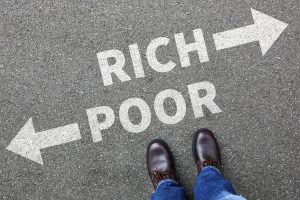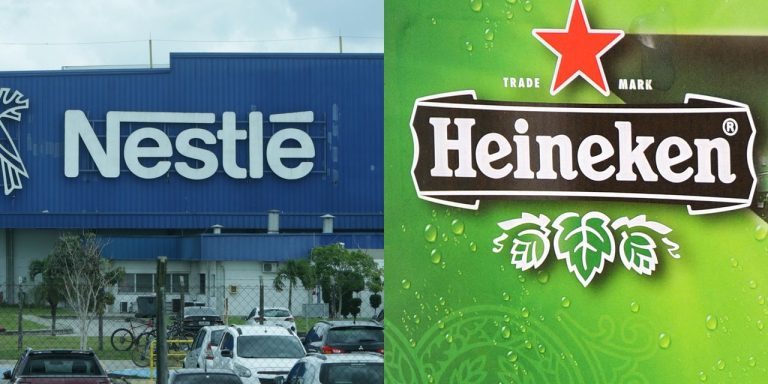Some international mutual funds are more diversified than others. In fact, some are heavily weighted to the U.S. technology stocks that have driven the S&P 500’s stellar returns over the past decade. This can make their performance comparisons with international stock indexes seem a bit slippery.
On the other hand, it is likely that a direct performance comparison between a truly international fund and the S&P 500
SPX
will end up with the U.S. index on top.
But maybe that isn’t the point. By now you are probably aware that the S&P 500, because of its weighting by market capitalization, is dominated by a handful of companies. Only five companies — Apple Inc.
AAPL,
Microsoft Corp.
MSFT,
Amazon.com Inc.
AMZN,
Nvidia Corp.
NVDA,
and Alphabet Inc.
GOOGL,
GOOG,
— make up 24% of the SPDR S&P 500 ETF Trust
SPY,
which is designed to track the U.S. benchmark.
There is no question that a strategy to track the S&P 500 has worked out well for patient investors over the past decade, but the approach makes for concentration risk to big tech. And no sector is likely to dominate forever. One way to diversify domestically would be to place some money in a fund taking an equal-weighted approach to the S&P 500.
But you might also be well served with exposure to companies outside the U.S., and a value focus can further diversify you away from high-flying tech stocks.
The $6.1 billion Tweedy, Browne International Value Fund TBGVX is focused on developed markets outside the U.S. Its U.S. investments made up 13.2% of its portfolio as of July 31. The fund has a four-star rating (out of five) within Morningstar’s Foreign Large Value category, even though its annual expenses of 1.4% of assets are considered high by the investment-information provider.
Here are comparisons of the fund’s average annual returns (after expenses) with its benchmark, the MSCI EAFE Index, in U.S. dollars, for various periods through Aug. 21, according to data provided by FactSet:
| Fund or index | 3-year average return | 5-year average return | 10-year average return | 15-year average return | 20-year average return | 30-year average return |
| Tweedy, Browne International Value Fund | 8.7% | 3.6% | 4.7% | 6.0% | 7.0% | 8.1% |
| MSCI EAFE Index | 6.2% | 4.3% | 4.9% | 4.3% | 6.6% | 5.5% |
| Source: FactSet | ||||||
The MSCI EAFE Index is designed to track the performance of large-cap and midcap stocks in developed markets, excluding the U.S. and Canada.
The fund’s average annual returns have trailed those of the index for five and 10 years but have exceeded them for all the other periods shown. And the differences can really add up. For 20 years, the fund’s average annual return through Aug. 21 was 7.0%, compared with 6.5% for the index. But look how those numbers correspond to total returns for the full period:
FactSet
And now look at a comparison of 30-year returns:
FactSet
One reason to emphasize long-term returns is that this management team has been with Tweedy for decades.
The Tweedy, Browne International Value Fund was established in June 1993. Tweedy, Browne Co., based in Stamford, Conn., is the successor to Tweedy & Co., which was founded by Forrest Berwind Tweedy in 1920. Tweedy met Benjamin Graham, the well-known value-investing pioneer and the author of “Security Analysis” and “The Intelligent Investor,” in the 1930s. Graham eventually became Tweedy & Co.’s largest brokerage client. You can read about the firm’s colorful history starting on page 5 of this annual report from 1995.
During an interview, Bob Wyckoff, Jay Hill and Thomas Shrager, all members of the firm’s investment-management committee with minimum 20-year tenures with the firm, discussed their approach to selecting securities.
Hill said that Tweedy, Browne’s investment process is to buy companies at prices that are “70% or less of a conservative estimate of intrinsic value.”
He continued: “Ben Graham had the idea of two prices — the stock price and the intrinsic value of the company, or what it would be worth if 100% of the company would be sold to a knowledgeable buyer at arm’s length.”
Wyckoff said the firm created the Tweedy, Browne International Value Fund — its first mutual fund — 30 years ago “to find an efficient way for all of our existing separately managed account clients to be able to participate in international equities hedged to the U.S. dollar.” At that time, “foreign equities were a lot cheaper than U.S. equities,” he said.
Non-U.S. stocks in developed markets still appear cheaply priced, as a group, when compared with U.S. stocks. According to FactSet, the iShares MSCI EAFE exchange-traded fund
EFA
trades for a weighted 12.7 times consensus earnings estimates for the next 12 months, compared with a forward price-to-earnings valuation of 18.7 for the S&P 500.
Wyckoff said that when Tweedy, Browne established the fund in 1993, the investment team wanted to avoid exposure to foreign currencies. “We felt that was an unmanageable risk,” he said. Through research, “we found you could successfully hedge out your foreign-currency risk while investing internationally at virtually no cost, in terms of forgone return over long measurement periods,” he added.
Wyckoff went on to explain that the fund isn’t fully hedged for currency risk because of the international nature of many companies’ businesses: “A company such as Nestlé, with all sorts of U.S. earnings, has an implicit hedge. That translates back into the Swiss franc. So we don’t hedge the U.S. dollar earnings component for foreign companies.”
Shrager said, “One of the main benefits of the hedging is it reduces the volatility of returns.”
That ties into one of the fund’s most important objectives, which is to help encourage investors to remain committed through down periods in the stock market.
“There is a tendency among individual investors, when the market is down, to bail out. They sell at the low, then they buy back after three or four years of good performance. You want to avoid that behavior by selecting good stocks, but you also want returns without the volatility,” Shrager said.
When discussing reasons U.S. investors should increase their exposure to stocks in developed markets outside the U.S., Shrager said companies in Europe, for example, have been forced to become “more flexible and efficient” to grow in other markets.
Taking a broader view, Wyckoff said that going back to the 1970s, returns for rolling 10-year periods have shown that “about 55% of the time U.S. outperforms, [and] 45% of the time EAFE outperforms.”
“We have just been through a 10-plus-year outperformance for U.S.,” Wyckoff said. “If the past is prologue, and that structure remains intact, we could be in store for a period of outperformance” for stock markets in developed countries outside the U.S.
When asked about how specific stock selections are made for the fund, Hill said that part of the appraisal process for identifying undervalued companies is to look at merger deals to see how much acquirers have been paying for similar companies. Those price comparisons could be enterprise value to earnings before interest, taxes, depreciation and amortization (Ebitda) or price to book value, for example.
“The best analogy for our investment process is the process you would go through if you were looking to buy a house or to sell one,” Hill said. Then the team goes further, to consider qualitative reasons for higher or lower valuation multiples, he said.
In addition to mergers-and-acquisition comparisons, Wyckoff, Hill and Schrager will consider stand-alone valuation metrics such as earnings yield, or profit per share divided by the share price.
Hill also called the Tweedy, Browne team “risk averse when it comes to debt leverage.”
“We are looking for companies that have, in general, net debt to [trailing] Ebtida below 2.5 times,” he said.
Wyckoff emphasized the importance of having skin in the game. “We eat our own cooking,” he said, with $158 million of the fund managers’ own money, or that of family members of the firm’s employees or partners, invested in the fund.
This idea is also important when selecting stocks for investment, he said. He and his colleagues look at patterns of insider buying of companies’ shares. And by insider buying, he doesn’t mean stock-based compensation. “The insiders are reaching into their own wallets and buying shares,” he said.
According to Morningstar, annual turnover for the Tweedy, Browne International Value Fund has been 15%. That is a low turnover rate for a stock mutual fund. Wyckoff said that the turnover percentage has ranged from 15% to 20% over long periods, making the fund “fairly tax-efficient for investors.”
But Shrager also emphasized the importance of selling, especially for stocks of companies in certain industries. “If you buy a steel company or a cyclical paper company at half of book and it goes to book, you sell it,” he said.
These cycles can be based on low commodity prices, he said.
“Elsewhere, you buy compounders with a moat around the business” to hold for long periods, Shrager said. Moats might include pricing power and market share. One example is the fund’s largest holding, Nestlé S.A.
NESN,
which has “has 30 brands that sell more than a billion dollars each” annually, he said.
So there are different buckets and different ways of deciding when to buy or sell companies. If a company has reached what the Tweedy, Browne team believes to be its intrinsic value, they will begin to sell.
Another reason to sell is if the team determines that their original buy thesis was incorrect, or if “facts have changed,” Hill said.
“The best analysts will be wrong a third of the time. That is part and parcel for this industry. You have to be comfortable you will be wrong a percentage of the time,” Hill added.
Here are the top 10 holdings (out of 99) of the Tweedy, Browne International Value Fund as of July 31:
| Company | Ticker | Country | % of the Tweedy, Browne International Value Fund | Total return – 5 years |
| Nestlé S.A. |
NESN, |
Switzerland | 5.1% | 44% |
| Safran S.A. |
SAF, |
France | 4.0% | 38% |
| TotalEnergies SE |
TTE, |
France | 3.8% | 49% |
| Diageo PLC |
DGE, |
U.K. | 3.8% | 30% |
| Berkshire Hathaway Inc. Class A |
BRK.A, |
U.S. | 3.7% | 70% |
| Alphabet Inc. Class A |
GOOGL, |
U.S. | 3.3% | 111% |
| BAE Systems PLC |
BA, |
U.K. | 3.2% | 88% |
| Heineken Holding NV |
HEIO, |
Netherlands | 2.9% | -3% |
| Roche Holding AG |
ROG, |
Switzerland | 2.8% | 22% |
| United Overseas Bank Ltd. |
U11, |
Singapore | 2.7% | 31% |
| Source: FactSet | ||||
Click on the tickers for more about each company.
Click here for Tomi Kilgore’s detailed guide to the wealth of information available for free on the MarketWatch quote page.
Don’t miss: These 20 dividend stocks have been the best income growers in the S&P 500
Read the full article here









